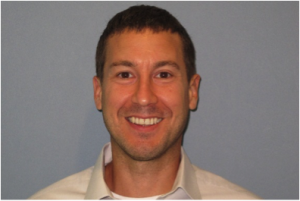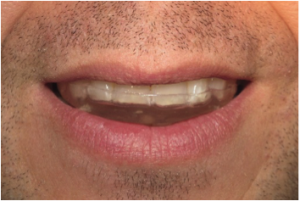By: Dr. Elizabeth Eggert
How did this start?
Jeff came to us as an established patient at one of his routine exams. He was experiencing increasing jaw pain and was having trouble eating. He remembered having jaw pain for the past five years, but things were getting noticeably worse. Jeff was also experiencing periods of lock jaw and knew he was clenching his teeth at night. Dr. Elizabeth noted some wear throughout his mouth and intense muscle discomfort during his muscle evaluation. Dr. Elizabeth recommended Jeff go through our records process so that she could delve deeper into the underlying causes of his pain.
What did Jeff want?
Jeff had noticed a lot more pain and wear in the past few years and wanted to have his mouth comfortable again. He also wanted to be able to eat without worry. Specifically, Jeff wanted his mouth to function better. He was also experiencing some ringing in ears and hearing changes that he was hoping to have addressed during the process.
What was revealed during the records process?
Dr. Elizabeth used models, photos, and x-rays of Jeff’s teeth along with our thorough muscle and joint evaluation results to present Jeff with the current status of his teeth, gums, and the function of his jaw and muscles. The details of the records process revealed that the position of Jeff’s teeth were causing multiple interferences. This means he was biting down unevenly causing the breakdown of his teeth as well as the jaw pain. It was recommended that Jeff begin splint therapy.
What was involved?
The purpose of his splint therapy was to change the position of Jeff’s jaw to a relaxed muscle position. In Jeff’s case, we also discussed how if we adjusted the teeth to fit together at the relaxed jaw position, he should be much more stable overall and long-term. Dr. Elizabeth fitted Jeff with an anterior deprogrammer to wear all of the time to create the best possible function between the natural position of his jaw, muscles, and his teeth as they worked with one another. As soon as Jeff’s muscles reached a comfortable and relaxed position, Dr. Elizabeth created a solid new bite for Jeff with equilibration. Dr. Elizabeth adjusted the alignment of the upper and lower teeth and altered the chewing surfaces of some of the teeth to remove the painful interferences. This created harmony among Jeff’s jaw joints, muscles, and teeth as the joints and muscles were placed in a relaxed position and the teeth now come together at the same time. We finally designed a splint for Jeff to wear while he sleeps to keep his teeth, jaw, and muscles in this new comfortable position.
What does Jeff think?
“I wanted to get rid of the pain and the Records Process helped me to understand what was going on. The process was easy and simple. I’m not having pain anymore! I’m not nervous to eat anymore! I used to get excruciating pain with certain bites. This has made me a lot happier for sure. I would highly recommend the procedure!”



